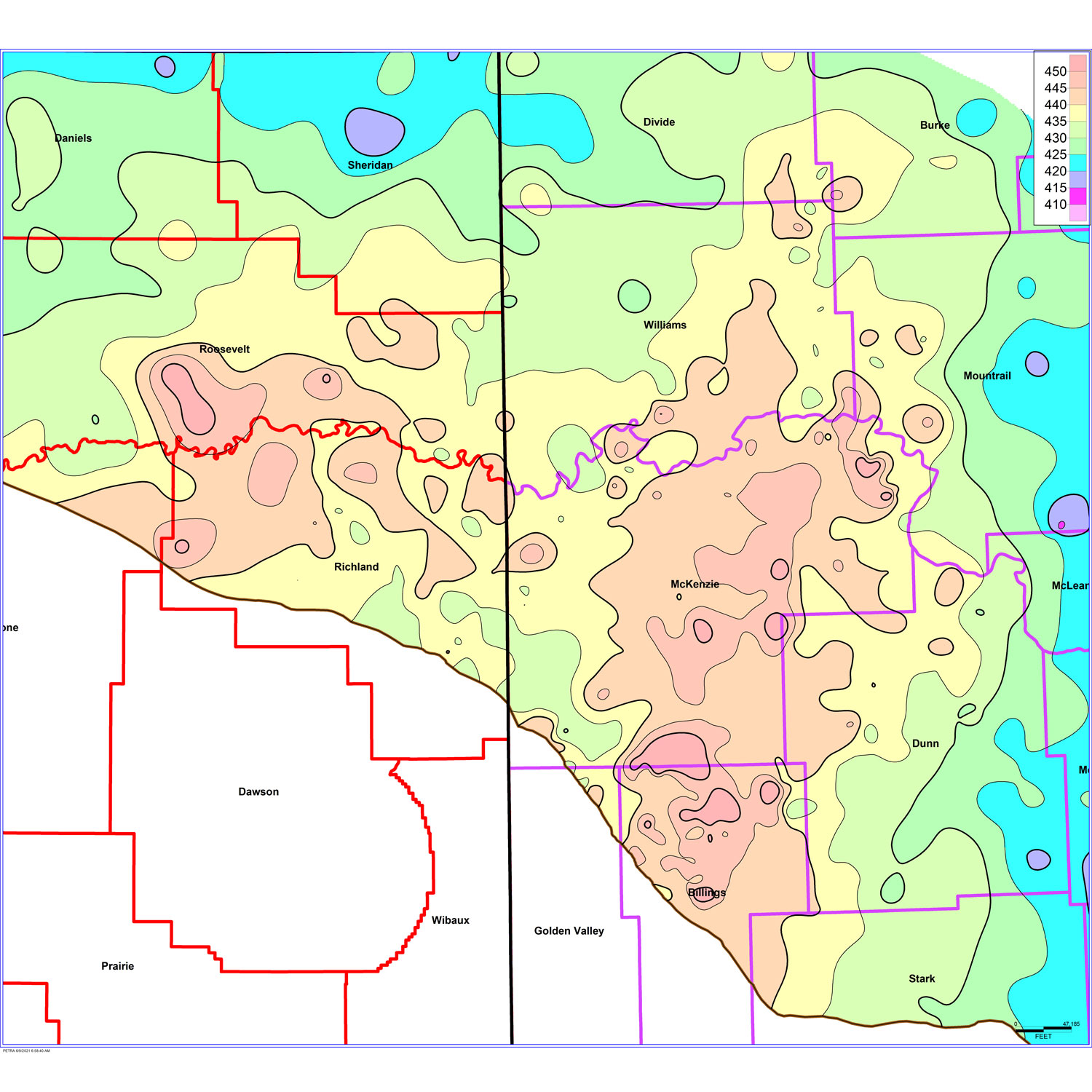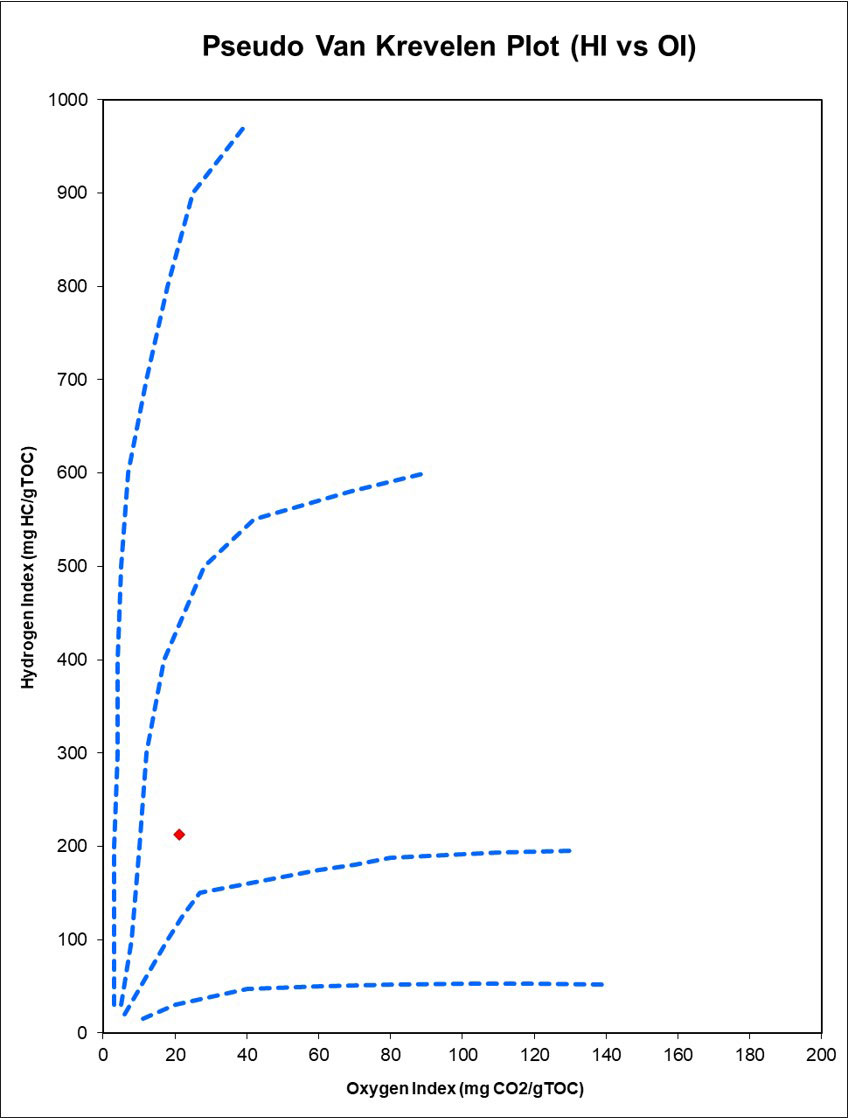Geochemistry
Geochemistry is an often-overlooked discipline within the oil and gas industry, but it can provide incredible insight and value for little cost.
Overview
Geochemistry is an often-overlooked discipline within the oil and gas industry, but it can provide incredible insight and value for little cost. Unconventional resources are dependent on source rock quality and maturity, and those properties must be obtained through geochemical techniques.
Geochemistry can also provide low-cost solutions to production questions. Furthermore, a strong understanding of potentially harmful completion fluids (i.e. acid) must be known in order to avoid damaging the near wellbore environment and limiting well productivity.

Map of Bakken Tmax values throughout the Williston Basin. Regions with hotter colors (red-orange-yellow) illustrate areas in which Bakken has reached high enough temperatures to generate hydrocarbons.
Full Geochemistry Skillset

Pseudo Van Krevelen diagram which plots the oxygen index versus the hydrogen index of a sample. This is a common and useful tool to assess the type of kerogen and expected hydrocarbon type (oil versus gas) from a source interval.

Graphical display of geochemical properties derived from rock-eval pyrolysis. Source rock maturity (Tmax) versus source rock quality (PI) and industry criteria cutoffs clearly display whether lab results meet viability.
Source Rock Geochemistry
- Identify source rock intervals from well logs.
- Ascertain quality and type of source rock (oil prone versus gas prone) from depositional environments and Van Krevelen diagrams.
- Characterize source maturity from lab (Rock-Eval Pyrolysis) and well log (Passey) analyses. Scrape out maturity data from public websites and map source rock intervals on a basin-wide scale.
- Gather core and cuttings samples for a prospective source rock from state and federal libraries. Manage lab testing such as rock-eval pyrolysis to obtain important geochemical properties such as TOC, HI, Tmax, and Ro. Use present-day geochemical data to calculate generated hydrocarbons from a specific source interval.
- Model heat flow variability by utilizing available DST data to calculate geothermal gradients.
Production Geochemistry
- Leverage isotope analysis techniques to identify produced water’s provenance (flowback versus in situ reservoir).
- Utilize all datasets of water geochemistry to help characterize water salinity and the resulting crucial Rw for petrophysical and volumetric analyses.
- Gas isotope analysis to identify compartmentalization within a reservoir.
- Use geochemical fingerprinting to allocate oil production to a specific formation/zone in comingled wellbores.
Formation Damage Studies
- Sludge Issues from acidizing
- Manage oil sampling and associated lab testing of crude oils to identify potential sludge formation with use of specific acids.
- Anhydrite Precipitation
- Identify intervals and potential problems of anhydrite precipitation blocking the near wellbore environment to limit well productivity. Manage lab tests to provide completion fluid recommendations to minimize damage.
- Scale Issues
- Integrate with field and lab personnel to determine appropriate chemical solutions to manage scale buildup issues.
- Integrate with field and lab personnel to determine appropriate chemical solutions to manage scale buildup issues.
Contact
We look forward to working on your next project.
Moosetooth Geological Consulting, LLC
6547 S. Dexter Street
Centennial, CO 80121
(303) 501-2571
maurits.thayer@moosetoothgeo.com
